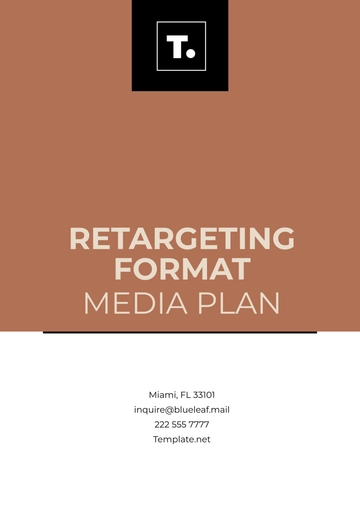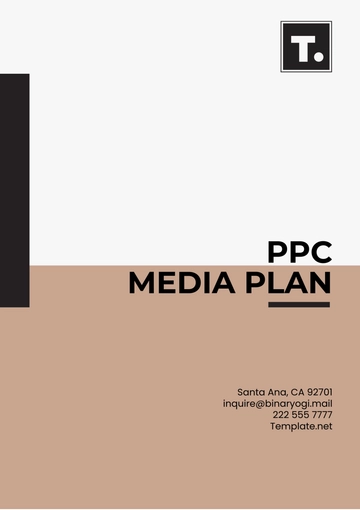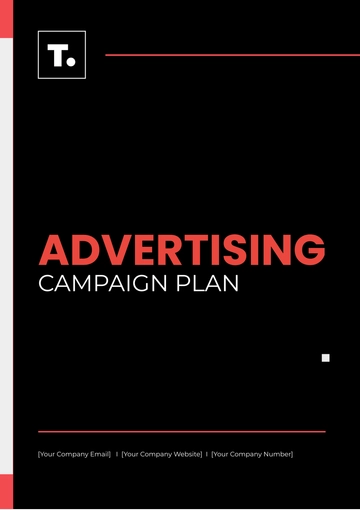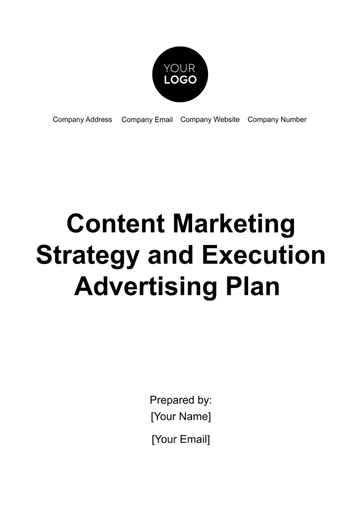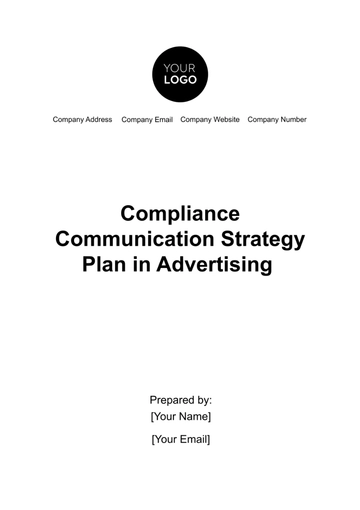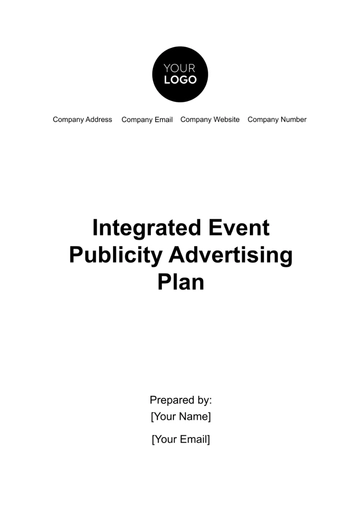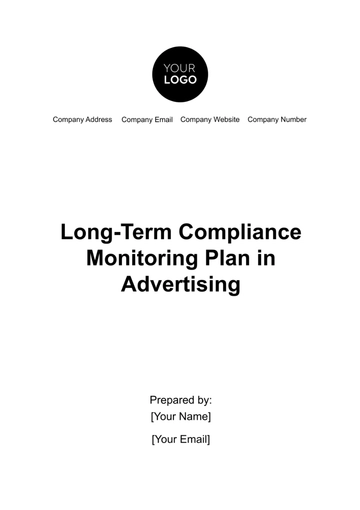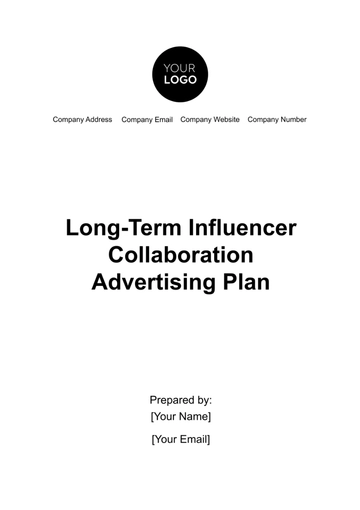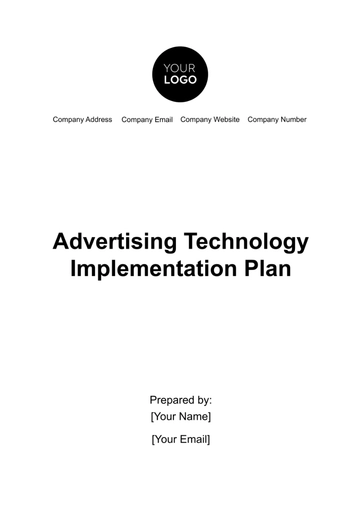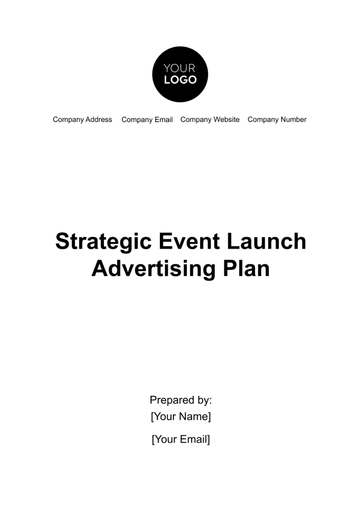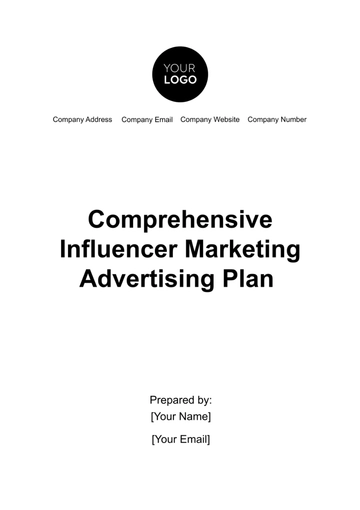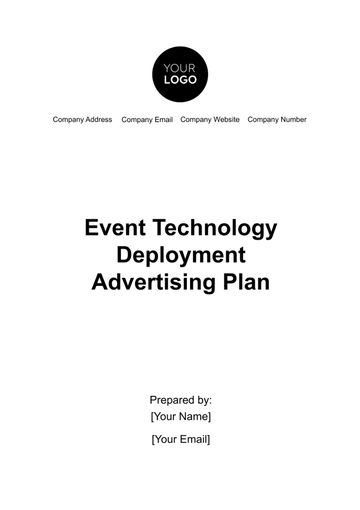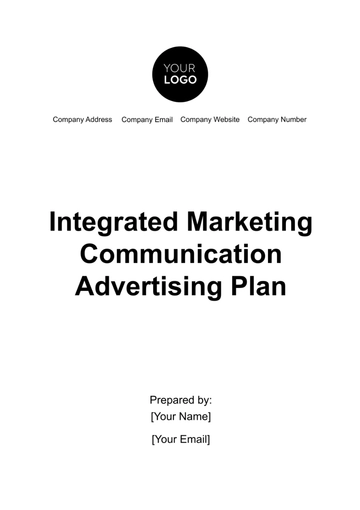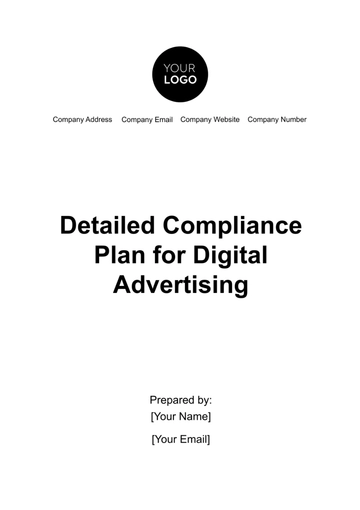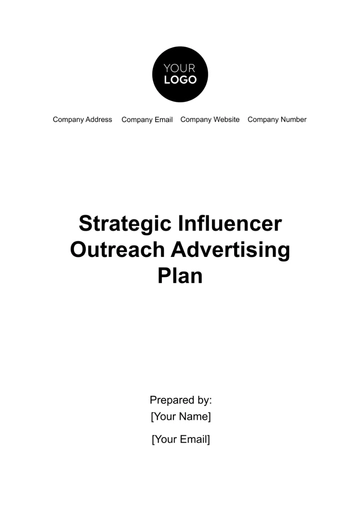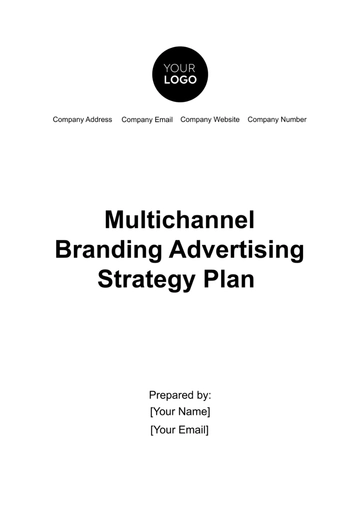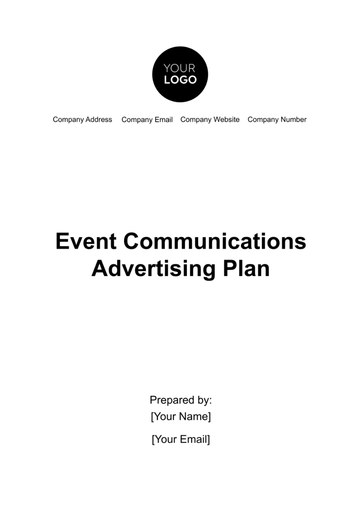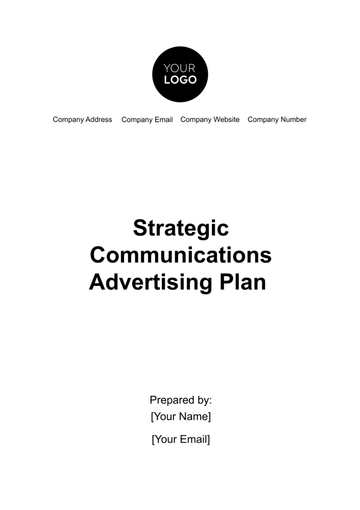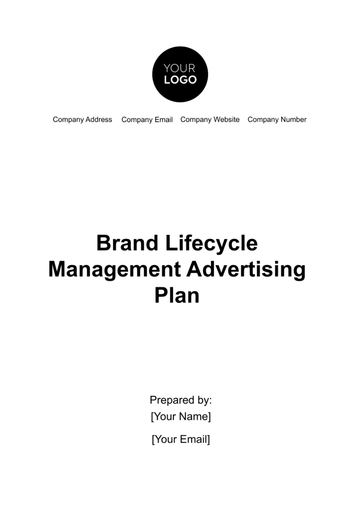Free Advertising Expense Reduction Plan
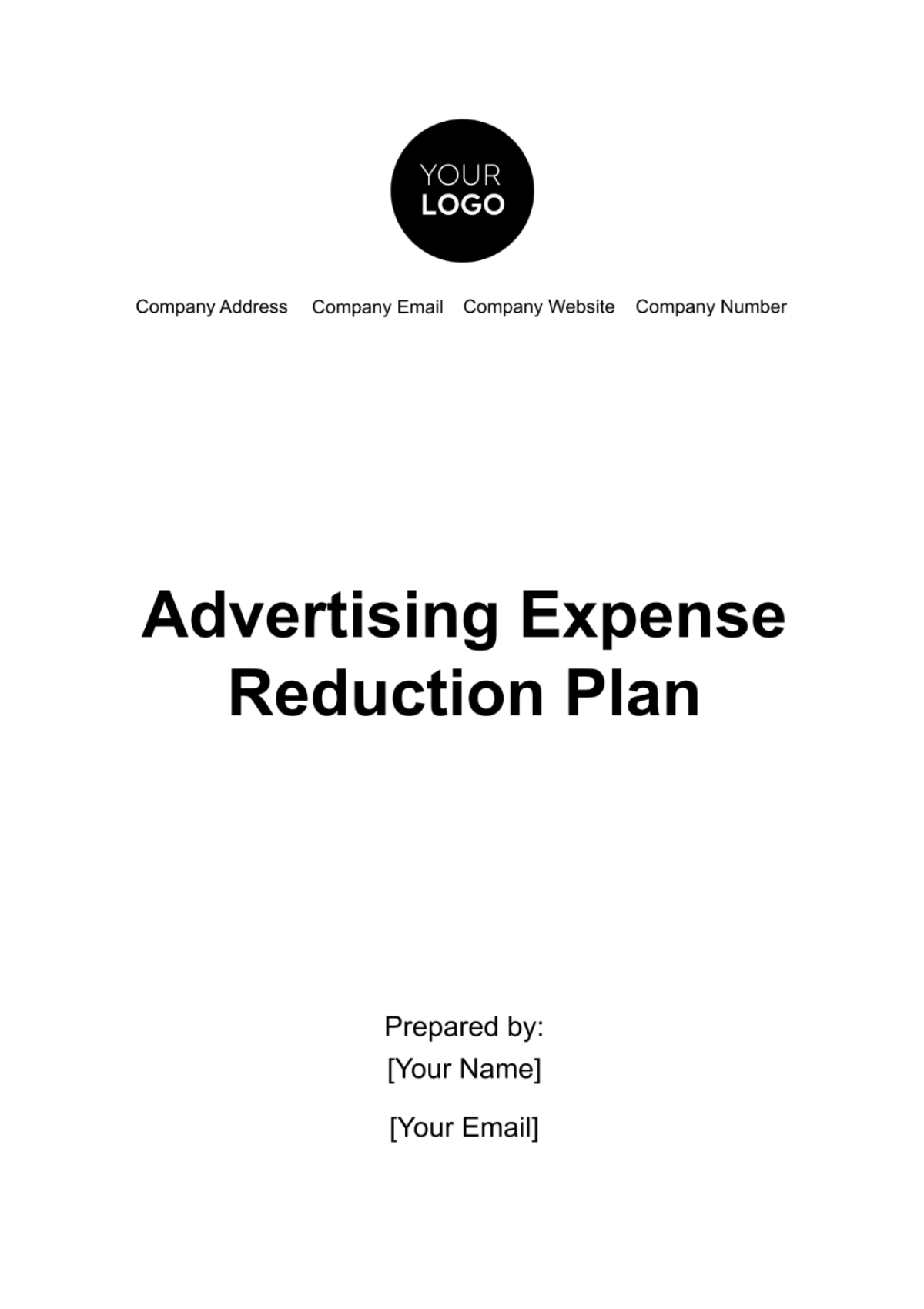
I. Executive Summary
In response to the evolving economic landscape and the imperative for fiscal responsibility, this Advertising Expense Reduction Plan is a strategic blueprint crafted to optimize our advertising budget. The plan seeks to streamline expenditures while preserving the efficacy of promotional initiatives. Through a meticulous analysis, we aim to achieve a judicious balance between cost reduction and the attainment of marketing objectives, ensuring the sustained impact of our campaigns in a dynamic market environment. This executive summary encapsulates our commitment to financial prudence, operational efficiency, and the long-term success of our advertising endeavors.
II. Objectives
The overarching objectives of the Advertising Expense Reduction Plan are multifaceted, aiming to achieve a harmonious balance between fiscal responsibility and the continued effectiveness of our promotional endeavors. This section outlines the specific objectives in greater detail.
A. Cost Containment
Systematically identify and reduce non-essential advertising expenditures without compromising the overall effectiveness of promotional campaigns.
B. Optimized Resource Allocation
Align advertising budgets with high-performing channels and campaigns to maximize return on investment (ROI). This objective involves a strategic reallocation of resources based on empirical data and performance metrics.
Resource Allocation Table
Advertising Channel | Current Budget ($) | Proposed Budget ($) | Adjusted Allocation ($) |
Digital Advertising | 100,000 | 80,000 | 20,000 |
Print Media | 50,000 | 40,000 | 10,000 |
Social Media Campaigns | 120,000 | 100,000 | 20,000 |
Events And Sponsorships | 80,000 | 60,000 | 20,000 |
C. Vendor Negotiation
Initiate strategic negotiations with advertising vendors to secure more favorable terms, explore discounts, and consolidate services where applicable. This objective is geared towards optimizing vendor relationships for cost-efficiency.
D. Operational Efficiency
Streamline content creation processes to enhance efficiency without sacrificing the quality and relevance of promotional materials. This involves optimizing workflows and collaboration to achieve time and resource savings.
E. Digital Marketing Optimization
Leverage digital marketing analytics to refine online advertising strategies. Allocate budget to channels and campaigns demonstrating optimal performance, ensuring a judicious use of resources in the digital realm.
These objectives collectively form the strategic framework for achieving a leaner and more efficient advertising budget, while simultaneously preserving and enhancing the impact of our promotional initiatives.
III. Key Initiatives
In the pursuit of our objectives, the Advertising Expense Reduction Plan is underpinned by a series of meticulously crafted key initiatives. Each initiative is strategically designed to not only contain costs but to enhance the overall efficiency and impact of our advertising endeavors.
A. Expenditure Audit
Objective: Conduct a comprehensive audit of current advertising expenditures, categorizing expenses, and identifying areas for potential reduction.
Actions:
Detailed Expense Categorization: Thoroughly categorize current advertising expenses to gain granular insights into cost distribution.
Identification Of Redundancies: Scrutinize expenditures to pinpoint redundant or non-essential costs that can be trimmed without compromising campaign effectiveness.
Recommendations Report: Generate a comprehensive report detailing identified areas for reduction and providing actionable recommendations.
B. Performance Metrics Assessment
Objective: Evaluate the effectiveness of advertising channels and campaigns through key performance indicators (KPIs) such as ROI, customer acquisition cost (CAC), and conversion rates.
Actions:
KPI Analysis: Conduct an in-depth analysis of key performance indicators to gauge the efficiency of each advertising channel.
Campaign Effectiveness Review: Assess the performance of individual campaigns to identify high-yielding initiatives and those requiring adjustments.
Reallocation Strategy: Develop a strategy for reallocating the budget based on the performance assessment to maximize ROI.
C. Vendor Negotiations
Objective: Initiate strategic negotiations with advertising vendors to secure more favorable terms, explore discounts, and consolidate services where applicable.
Actions:
Vendor Partnership Review: Evaluate the terms of existing vendor partnerships to identify opportunities for cost optimization.
Negotiation Strategy: Develop a comprehensive negotiation strategy, considering volume discounts, extended contract terms, and bundled service packages.
Contract Consolidation: Explore opportunities to consolidate advertising services with key vendors to achieve cost savings without compromising quality.
D. Digital Optimization
Objective: Leverage digital marketing analytics to refine online advertising strategies. Allocate budget to channels and campaigns demonstrating optimal performance.
Actions:
Digital Channel Performance Analysis: Analyze the performance of digital advertising channels, including social media, search engine marketing, and display advertising.
Budget Reallocation: Shift budget allocations to channels and campaigns demonstrating superior performance, ensuring optimal use of resources.
Adaptation To Trends: Stay abreast of digital marketing trends and adjust strategies accordingly to maintain competitiveness in the digital landscape.
E. Content Efficiency
Objective: Evaluate and streamline content creation processes to enhance efficiency without sacrificing the quality and relevance of promotional materials.
Actions:
Workflow Optimization: Identify bottlenecks and inefficiencies in the content creation workflow and implement streamlined processes.
Collaborative Tools Integration: Explore the integration of collaborative tools to facilitate seamless communication and coordination among content creators.
Quality Assurance Measures: Implement measures to ensure that streamlining processes do not compromise the quality and relevance of advertising content.
F. Testing And Iteration
In this crucial phase, we embark on a dynamic process of testing and iteration to refine our advertising strategies. Through systematic experimentation, we identify high-performing elements while swiftly adapting or eliminating less effective components. This iterative approach is not merely a measure of cost efficiency; it is a strategic evolution, ensuring that our promotional endeavors continually align with market dynamics and consumer preferences.
The Testing and Iteration initiative encompasses:
A/B Testing: Implementing controlled experiments to compare variations in elements such as ad copy, visuals, and targeting parameters. This data-driven approach allows us to discern which components resonate most effectively with our target audience.
Performance Analytics: Leveraging sophisticated analytics tools to dissect campaign performance metrics. This includes scrutinizing conversion rates, click-through rates, and other key performance indicators, enabling data-informed decision-making.
Feedback Integration: Actively soliciting and incorporating feedback from stakeholders, customers, and internal teams. This iterative loop ensures that our advertising strategies not only meet but exceed expectations, fostering continuous improvement.
Through this systematic and agile approach, we not only optimize costs but position ourselves as pioneers in adapting to the ever-changing landscape of advertising, ensuring sustained relevance and impact.
G. Cross-Functional Collaboration
Initiating a harmonious synergy between the marketing and finance teams is pivotal to the success of this Advertising Expense Reduction Plan. By fostering cross-functional collaboration, we aim to align advertising expenditures with broader financial goals. This collaborative approach ensures that every dollar spent on advertising not only contributes to marketing objectives but also strategically integrates with the organization's overall financial strategy. Through regular communication and shared insights, this collaborative effort maximizes the efficiency of our advertising budget while maintaining a unified focus on achieving overarching business objectives.
H. Long-Term Sustainability
In establishing a foundation for long-term sustainability, this initiative aims to create a dynamic framework that transcends immediate cost-cutting measures. It involves the integration of ongoing efficiency, adaptability to market shifts, and alignment with broader organizational goals.
Key Components
1. Periodic Reviews
Implement regular and comprehensive reviews of advertising expenditures, ensuring continued alignment with organizational objectives and market dynamics.
2. Continuous Performance Monitoring
Institute a robust system for monitoring key performance indicators (KPIs) to swiftly identify deviations and optimize strategies in response to changing trends.
3. Adaptability To Market Conditions
Cultivate a culture of adaptability, enabling the organization to flexibly respond to evolving market conditions and technological advancements.
4. Strategic Alignment
Forge a strategic alignment between advertising expenditures and broader financial goals, ensuring that every dollar invested contributes not just to promotional endeavors but to the overall financial health of the organization.
5. Cross-Functional Collaboration
Continue fostering collaboration between marketing and finance teams to sustain a cohesive approach to budgeting that considers both financial prudence and marketing efficacy.
6. Innovation Integration
Promote a culture of innovation within the advertising domain, encouraging the exploration of emerging trends, platforms, and creative approaches to maintain a competitive edge.
7. Employee Training
Invest in continuous education for marketing teams, ensuring they are equipped with the latest skills and knowledge to navigate the ever-evolving landscape of advertising.
Long-term sustainability is not just a commitment to financial stewardship but a holistic strategy that positions the organization for enduring success. By integrating these key components, we ensure that our advertising efforts remain not only efficient but also adaptive and aligned with the strategic goals of the organization. This initiative represents an investment in the future, where our advertising endeavors contribute not only to immediate success but also to the lasting resilience and relevance of our organization.
Key Initiatives Table
Initiative | Objective | Actions |
Expenditure Audit | Conduct a comprehensive audit of current expenditures |
|
Performance Metrics Assessment | Evaluate the effectiveness of advertising channels and campaigns |
|
Vendor Negotiations | Initiate strategic negotiations with advertising vendors |
|
Digital Optimization | Leverage digital marketing analytics for refinement |
|
Content Efficiency | Evaluate and streamline content creation processes |
|
These key initiatives collectively form a cohesive strategy, ensuring that our Advertising Expense Reduction Plan is not merely a cost-cutting exercise but a strategic framework aimed at enhancing the overall efficiency and impact of our advertising endeavors.
IV. Conclusion
This Advertising Expense Reduction Plan represents not just a pragmatic response to economic dynamics but a strategic imperative for our organization. By meticulously analyzing and implementing targeted initiatives, we position ourselves at the vanguard of fiscal responsibility and marketing prowess.
As we embark on this journey towards optimized advertising expenditures, it is essential to recognize that our commitment to financial prudence is not at the expense of creativity or impact. Instead, it is a synergistic endeavor to extract maximum value from every promotional endeavor.
Through the implementation of these initiatives, we anticipate not only a leaner budget but a more agile and responsive advertising strategy. This plan lays the groundwork for a resilient organization, capable of navigating the complexities of the business landscape with finesse.
In embracing ongoing efficiency, we forge a path towards sustained success. Our dedication to cost reduction is matched only by our unwavering commitment to delivering impactful campaigns that resonate with our audience. This plan, therefore, is not merely a cost-cutting measure; it is a strategic blueprint for long-term sustainability and competitiveness.
As we venture into this new phase, let it be known that our journey is not one of retrenchment but of strategic evolution. By optimizing our advertising expenditures, we position ourselves as pioneers in an era where financial acumen and marketing innovation are inseparable. This plan is not just a response to the present; it is an investment in our future as a dynamic, resilient, and forward-thinking organization.
- 100% Customizable, free editor
- Access 1 Million+ Templates, photo’s & graphics
- Download or share as a template
- Click and replace photos, graphics, text, backgrounds
- Resize, crop, AI write & more
- Access advanced editor
Template.net presents its Advertising Expense Reduction Plan Template - a customizable solution that covers all marketing costs. This template is editable in our Ai Editor Tool, allowing you to personalize it based on your company's objectives. Cutting down unnecessary advertising expenditure is now hassle-free and efficient. Try our editable template and tangibly improve your company's financial stability.
You may also like
- Finance Plan
- Construction Plan
- Sales Plan
- Development Plan
- Career Plan
- Budget Plan
- HR Plan
- Education Plan
- Transition Plan
- Work Plan
- Training Plan
- Communication Plan
- Operation Plan
- Health And Safety Plan
- Strategy Plan
- Professional Development Plan
- Advertising Plan
- Risk Management Plan
- Restaurant Plan
- School Plan
- Nursing Home Patient Care Plan
- Nursing Care Plan
- Plan Event
- Startup Plan
- Social Media Plan
- Staffing Plan
- Annual Plan
- Content Plan
- Payment Plan
- Implementation Plan
- Hotel Plan
- Workout Plan
- Accounting Plan
- Campaign Plan
- Essay Plan
- 30 60 90 Day Plan
- Research Plan
- Recruitment Plan
- 90 Day Plan
- Quarterly Plan
- Emergency Plan
- 5 Year Plan
- Gym Plan
- Personal Plan
- IT and Software Plan
- Treatment Plan
- Real Estate Plan
- Law Firm Plan
- Healthcare Plan
- Improvement Plan
- Media Plan
- 5 Year Business Plan
- Learning Plan
- Marketing Campaign Plan
- Travel Agency Plan
- Cleaning Services Plan
- Interior Design Plan
- Performance Plan
- PR Plan
- Birth Plan
- Life Plan
- SEO Plan
- Disaster Recovery Plan
- Continuity Plan
- Launch Plan
- Legal Plan
- Behavior Plan
- Performance Improvement Plan
- Salon Plan
- Security Plan
- Security Management Plan
- Employee Development Plan
- Quality Plan
- Service Improvement Plan
- Growth Plan
- Incident Response Plan
- Basketball Plan
- Emergency Action Plan
- Product Launch Plan
- Spa Plan
- Employee Training Plan
- Data Analysis Plan
- Employee Action Plan
- Territory Plan
- Audit Plan
- Classroom Plan
- Activity Plan
- Parenting Plan
- Care Plan
- Project Execution Plan
- Exercise Plan
- Internship Plan
- Software Development Plan
- Continuous Improvement Plan
- Leave Plan
- 90 Day Sales Plan
- Advertising Agency Plan
- Employee Transition Plan
- Smart Action Plan
- Workplace Safety Plan
- Behavior Change Plan
- Contingency Plan
- Continuity of Operations Plan
- Health Plan
- Quality Control Plan
- Self Plan
- Sports Development Plan
- Change Management Plan
- Ecommerce Plan
- Personal Financial Plan
- Process Improvement Plan
- 30-60-90 Day Sales Plan
- Crisis Management Plan
- Engagement Plan
- Execution Plan
- Pandemic Plan
- Quality Assurance Plan
- Service Continuity Plan
- Agile Project Plan
- Fundraising Plan
- Job Transition Plan
- Asset Maintenance Plan
- Maintenance Plan
- Software Test Plan
- Staff Training and Development Plan
- 3 Year Plan
- Brand Activation Plan
- Release Plan
- Resource Plan
- Risk Mitigation Plan
- Teacher Plan
- 30 60 90 Day Plan for New Manager
- Food Safety Plan
- Food Truck Plan
- Hiring Plan
- Quality Management Plan
- Wellness Plan
- Behavior Intervention Plan
- Bonus Plan
- Investment Plan
- Maternity Leave Plan
- Pandemic Response Plan
- Succession Planning
- Coaching Plan
- Configuration Management Plan
- Remote Work Plan
- Self Care Plan
- Teaching Plan
- 100-Day Plan
- HACCP Plan
- Student Plan
- Sustainability Plan
- 30 60 90 Day Plan for Interview
- Access Plan
- Site Specific Safety Plan

